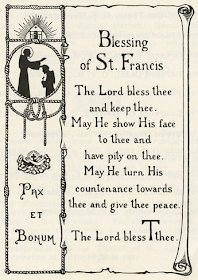Our open house promised three things:
- Treasures: samples of the most interesting, eye-catching or generally awe-inspiring documents and artifacts in our holdings
- Trivia: a contest ballot that visitors could complete while wandering around the archives
- Treats: we made some edibles based on records in our holdings
 |
| ARCAT Director Marc Lerman (left) discusses vestments. |
 |
| Bling is always a hit with visitors! In addition to pectoral crosses and episcopal rings, there was also a benemerenti and a Companion to the Order of Canada medal on display. |
 |
| Examples of different types of black and white photos and their storage. |
 |
| Examples of textual records, such as a broadsheet of The Toronto Mirror (1856), a ticker tape telegraph, greeting cards, and a note signed by Prime Minister John A. MacDonald |
 |
| The trivia questions. Happy to report we some very intrepid trivia hounds and three winners. |
 |
| On their way out, we invited guests to help themselves to some records-inspired treats. We made "French Kisses" (coconut and almond meringues) that were listed under Ornamented Confectionery in this 1884 banquet menu (only because we thought "Arches of Buffalo Tongues" was slightly over the top). We also made a Cinnamon Loaf cake from the 1976 Centennial Recipe Book from St. Patrick's Parish, Schomberg. |
In addition, we tried to familiarize our colleagues with some of the work we do by setting up a conservation station, a processing station, and a photography table.
 |
| At the processing station we demonstrated how contemporary records that are transferred to us are appraised, arranged, described and rehoused. The photography table in the background is for shooting items for the Sacred Objects Exchange. |
We are happy to report that the open house was a sweet suite outreach success. Our colleagues were engaged and it was fantastic opportunity for us to show off the archives!





.jpg)






PH78-(163)S.jpg)
084c002-(1).jpg)
PH78-(49)S.jpg)
121c004.jpg)
PH78-(25)S.jpg)
062c006.jpg)
PH76-48and49T.jpg)
PH0093-50CP.jpg)
PH78-(7)S.jpg)
PH78-154-18CP.jpg)
PH0055-18P.jpg)
PH78-(139)S.jpg)
PH0072-25CP.jpg)
PH78(22)S.jpg)